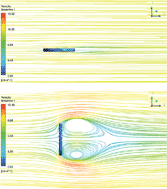Effect of the orientation and fluid flow on the accumulation of organotin compounds to Chemcatcher passive samplers
Abstract
Monitoring of harmful substances in an aquatic environment is based on spot sampling which is the only sampling technique accepted by environmental authorities in the European Union. Still the implementation of the European Union Water Framework Directive (WFD) requires novel sampling tools for monitoring priority pollutants since their concentrations in natural waters can often remain below the limit of detection when using the conventional spot sampling method. However, this does not necessarily mean that the pollutant is not present in the aquatic environment. Many chemicals that are considered to be harmful are bioaccumulative and can affect, e.g., reproduction of aquatic organisms even at very low concentration levels. Also the timing is crucial since with spot sampling the pulse of harmful substances can easily be missed. Passive samplers collect the compounds for a certain amount of time which allows the concentrations in the sampler to rise to the measurable level where they are easy to detect. Organotin compounds (OTCs) have been widely used as plastic stabilizers and antifouling agents in ship paints and in many industrial processes. Among the OTCs, tributyltin is listed as a WFD priority substance. In this study a small-scale flow simulation around the Chemcatcher passive sampler was performed to visualize the flow streamlines in the vicinity of the sampler and to study the pressure experienced by the receiving phase in different sampler positions. With laboratory experiments the sampling rates for each OTC were determined and the effect of the flow velocity and sampler orientation on the accumulation of OTCs is discussed. The pressure changes were observed on the surface of the receiving phase in simulations with varying sampler orientations. Despite that, the laboratory experiments discovered no difference in the accumulation of compounds when varying the sampler orientation. The concentrations of OTCs in the surrounding water calculated from the passive sampling results were equivalent to the spot sampling ones. Hence, the Chemcatcher passive sampler provides a practical tool for the implementation of WFD.


 Please wait while we load your content...
Please wait while we load your content...